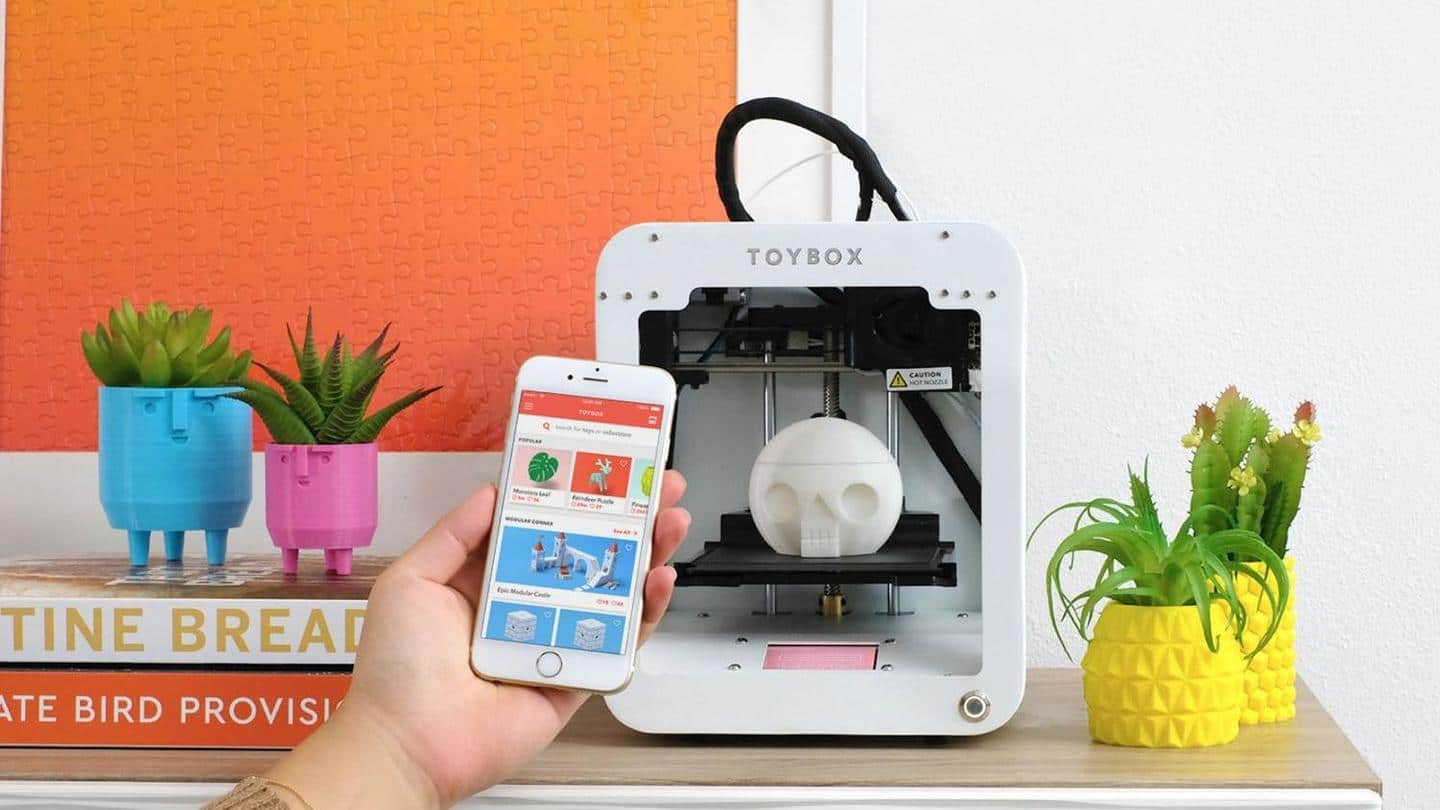
Here's why Toybox can't claim its 3D printer is easy-to-use
What's the story
Toybox is an American manufacturer of 3D printers. The company's claim to fame has been a tiny 3D printer marketed as a tool that kids and parents can use to create toys not found on store shelves.
However, upon closer inspection, we found that the marketing is misleading at best. Crucial safety features, usability, and print quality have been swapped for gimmicks.
Forty years on
3D printers are too complicated to become household appliances
Although 3D printing has been available for 40 years, it hasn't yet become a mainstream household accessory, save for serious creators, enthusiasts, and tinkerers.
Toybox's 3D printer sees regular discounts on e-retail platforms and promotions by media outlets such as Pocketnow.
However, there are multiple reasons why widespread early adoption didn't transform the technology into a mainstream consumer goods category.
FDM explained
How does 3D printing technology create usable objects?
3D printing is a prototyping technique that relies on additive manufacturing. This means that material is added to make objects, instead of being cut away.
Fused deposition modeling (FDM) is the process of depositing material layer-by-layer to create objects. This is essentially how objects are 3D printed.
3D printing saves time and material spent developing products. Present-day consumer-grade 3D printers print using plastic filament.
Leeching lead
$314 bundle provides 8 filament spools for printing 100+ toys
Toybox claims that prints need not be cut and shaped with a knife.
The $314 bundle includes eight non-toxic filament spools which are good to print 100 to 300 toys from a catalog. The marketing, however, glosses over how the printer's brass nozzle leeches lead into toys.
Toybox's mobile app also allows consumers to "design" their own items as demonstrated in this video.
Skill intensive
Why are homemade 3D prints nowhere near mass-produced plastic parts?
3D printers have been affordable for home users for almost two decades now. They even make regular appearances in movies such as Jurassic Park.
However, obtaining prints even comparable to mass-produced plastic products requires either commercial printers worth over $5,000 or mastery of electronics, firmware modification, and mechanical engineering.
An understanding of physics and thermodynamics also comes in handy to refine results.
Limited by volume
Important ease-of-use, print-improving features replaced by unnecessary gimmicks
Toybox claims its printers are plug-and-play. However, its minuscule printable volume measuring 9 x 8 x 10 cm seriously limits the kinds of things you can print.
Although Toybox offers gimmicks such as smartphone integration, features such as automatic bed leveling (ABL) crucial for successful prints are missing.
The absence of ABL requires manual bed leveling, which is something that makes grown men cry.
Tip of the iceberg
3D printing is too complicated and fickle for general adoption
Besides that, there are hundreds of system variables buried in the printer's firmware and software (slicer) for processing 3D models.
The image alongside shows the fruit of our experimentation at NewsBytes Test Labs. Tweaking even one of the 150+ slicer settings drastically impacts print quality.
The only way to dial in settings properly is with experience, empirical rigors, and an in-depth understanding of the process.
Impossible standardization
PLA plastic is biodegradable, but only commercially so
As process parameters vary for various printers and materials, settings that work for one may not work for another. In fact, print quality is even affected by seemingly trivial details such as the temperature your AC is set at.
Additionally, no amount of marketing will reverse the truth that Polylactic Acid (PLA) plastic isn't domestically biodegradable. PLA is widely preferred by 3D printing beginners.
Design thinking
Designing, optimizing parts for 3D printing is no small feat
Another aspect 3D printer marketing frequently obscures is the skill and aptitude it takes to design products optimized for additive manufacturing.
It's one thing to design 8-bit Minecraft-esque action figures and something totally else to design and print detailed scale models of the dinosaurs kids gravitate towards at Hamley's.
Moreover, product design and orientation also impact print speed and material wasted generating supports.
On your own
3D printing isn't waste-free, failed toy prints can't be rescued
While 3D printing does enable do-it-yourself manufacturing, it doesn't eliminate waste from the equation, specifically when consumers are left on their own to mitigate and rectify failed prints.
Failed prints are a statistical certainty when Toybox printers lack automatic bed leveling and user-serviceable parts.
Not to mention, even dialed-in 3D printers have their fair share of problems such as clogged nozzles and bent leadscrews.
No child's play
For now, 3D printing isn't truly a consumer durable endeavor
Due to the sheer complexity of 3D printing, it has been reduced to a hobby for the technically inclined and inquisitive.
Looks like 3D printers won't become the proverbial microwave in everyone's homes as MakerBot envisioned.
So, until a solution becomes commercially available to templatize 3D printing parameters, marketing claiming kids can print their own toys should be taken with a pinch of salt.